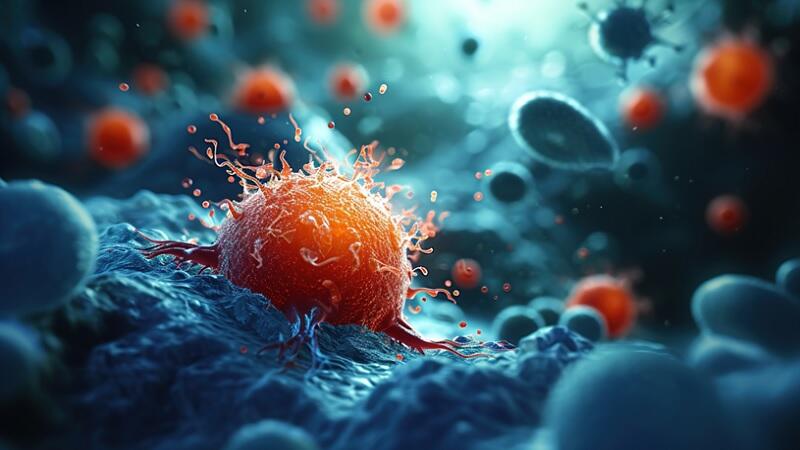A research group led by Project Associate Professor Masayuki Tsukasaki and Professor Hiroshi Takayanagi of the Graduate School of Medicine at the University of Tokyo found that periosteal cells produce the protease inhibitor Timp1 in response to cancer cells approaching bone, forming a collagen barrier that physically prevents tumor invasion. This is the first study in the world to demonstrate a completely new anticancer mechanism by non-immune cells and its significance. The findings are expected to contribute to the development of new non-immune system-based therapeutic strategies rather than immune system-based therapeutics, such as immune checkpoint inhibitors. The results were published in Nature.

More than 90% of head and neck cancers are squamous cell carcinomas, and the most common site of tumor occurrence is the oral mucosa. This is a unique mucosal barrier site with bone tissue (the jawbone) immediately beneath it, and bone invasion significantly impairs the survival and quality of life of patients with oral cancer. However, the molecular mechanism of oral cancer bone invasion remains unknown, and there is an urgent need to understand its pathophysiology and establish effective control methods.
Unlike hematogenous bone metastases, which have been studied extensively, bone invasion requires the tumor to penetrate the bone across the periosteum. The involvement of the periosteum makes bone invasion distinct from bone metastasis in terms of the process of tumor extension and the biological response to it. However, there have been no reports on the function of the periosteum in cancer bone invasion.
Previously, the research group has conducted studies focusing on the function of the periosteum and have clarified the importance of the periosteum in bone growth. The group focused on the function of the periosteum in bone invasion in oral cancer because they believed that the periosteum might also play an important role under pathological conditions.
In dentistry and orthopedics, the periosteal reaction, which refers to inflammation-induced thickening of the periosteum and formation of new bone, is well known and is used as a radiographic finding in the diagnosis of osteomyelitis and osteosarcoma. The phenomenon of periosteal thickening due to nociceptive stimulation of bone was first reported in France in 1739. However, the periosteal reaction was considered merely a secondary effect of inflammation, and its biological significance and mechanism remained unknown for over 280 years.
The research group, in collaboration with Professor Kazuto Hoshi and Graduate Student Kazutaka Nakamura of the Graduate School of Medicine at the University of Tokyo, conducted a detailed analysis of specimens from oral cancer patients who underwent surgery at the University of Tokyo Hospital. They found three- to four-fold increases in the thickness of the periosteum in preinvasive tissues where the tumor was in proximity to the bone. Moreover, in a novel mouse model of oral cancer bone invasion, analysis of mouse oral cancer lesions at single-cell resolution revealed increased periosteal cells and markedly changed gene expression patterns in bone tissue in the proximity of the tumor compared with the control tissue. They identified the protease inhibitor Timp1 as the gene most significantly upregulated in periosteal cells in response to tumor approach. They found that deletion of Timp1 in mice completely precluded periosteal thickening due to tumor approach, resulted in marked progression of bone invasion, and induced earlier death than in wild-type mice.
These results revealed a unique phenomenon that in response to tumor approach, periosteal cells release Timp1, which inhibits proteases in the tumor microenvironment and promotes the accumulation of collagen and other extracellular matrix components, thereby inducing periosteum thickening to provide a physical barrier against tumor extension. This finding suggests that one element of the biological significance of the periosteal response, which has remained a mystery for more than 280 years, may be a protective response against tumors.
This study demonstrated the importance of antitumor effects mediated by cells of the non-immune system at the in vivo level for the first time in the world, thereby creating the concept of SDAC (stromal defense against cancer), a completely new antitumor mechanism by stromal cells. If there are means to prevent tissue invasion by residual or recurrent cancer cells occurring even when cancer is treated with surgery, drugs, or radiation, the outcomes of cancer treatment will be greatly improved. The findings are expected to contribute to the development of new anticancer therapies based on the innovative concept of tumor control targeting non-immune cells.
Journal Information
Publication: Nature
Title: The periosteum provides a stromal defence against cancer invasion into the bone
DOI: 10.1038/s41586-024-07822-1
This article has been translated by JST with permission from The Science News Ltd. (https://sci-news.co.jp/). Unauthorized reproduction of the article and photographs is prohibited.




